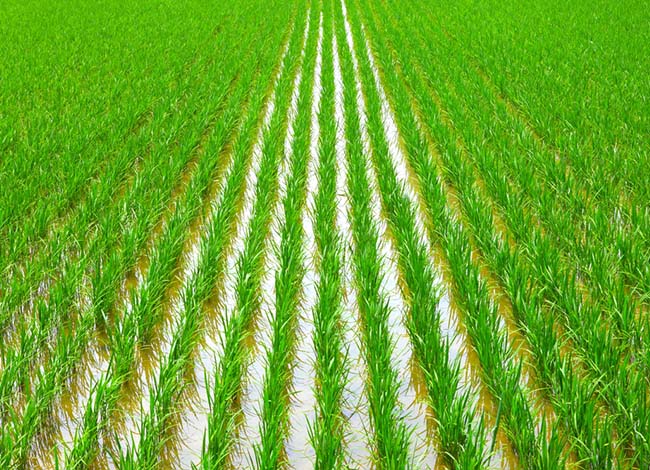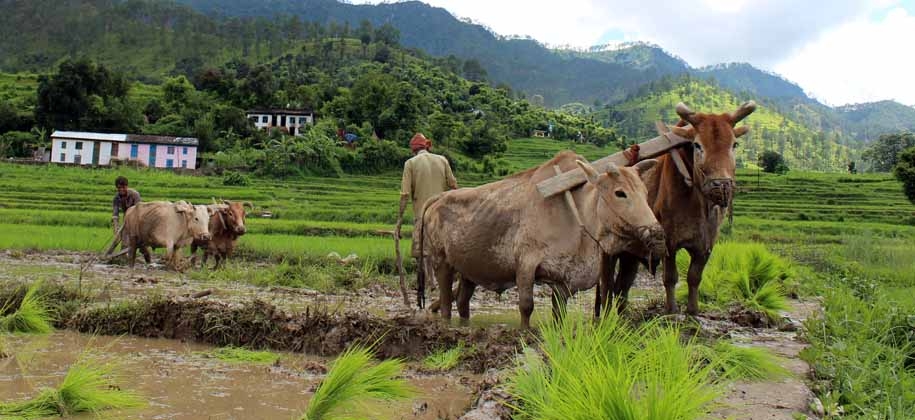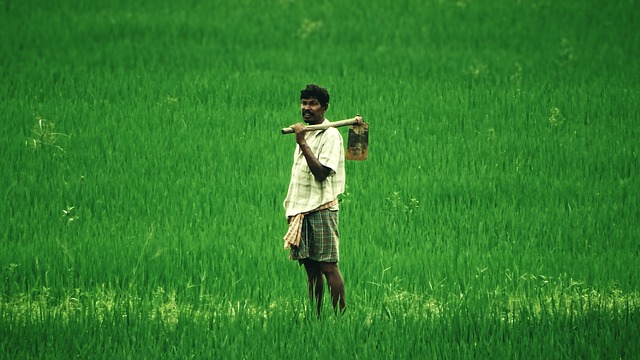AGRICULTURE
One of the most significant weaknesses of India’s research effort has been that the traditional wisdom of India’s farmers did not get adequate attention and instead our farm research became over-dependent on the technology and crop varieties from abroad. This has proved very harmful for our agriculture and therefore it is important to draw attention to the rich heritage of traditional farming wisdom in India.
Bharat Dogra is a freelance journalist who has been involved with several social movements and initiatives.

[dropcap]E[/dropcap]ven during the days of British rule, several British and European experts who had been called to study traditional Indian agriculture spoke glowingly of very rich traditions and scientific basis of the cultivation practices pursued by Indian farmers.
In 1889, Dr. John Augustus Voelcker, of the Royal Agricultural Society of England was deputed by the British government to study Indian agriculture. Voelcker toured the country extensively for over one year. His report was published in 1893, and since then has often been cited as an authoritative work on Indian agriculture of this period.
The essence of what Dr. Voelcker said can be summarized in the following extract from his report :
“To take the ordinary acts of husbandry, no where would one find better instances of keeping land scrupulously clean from weeds, of ingenuity in device of water-raising appliances, of knowledge of soils and their capabilities as well as of the exact time to sow and to reap, as one would in Indian agriculture, and this not at its best only but at its ordinary level. It is wonderful, too, how much is known of rotation, the system of mixed crops and fallowing. Certain it is that I, at least, have never seen a more perfect picture of careful cultivation, combined with hard labour, perseverance and fertility of resource, than I have seen at many of the halting places in my tour. Such are the gardens of Mahi, the fields of Nadiad and many others.”
An important asset of traditional Indian agriculture was the well-developed irrigation system, “Irrigation by wells is at once the most widely distributed system, and also the one productive of the finest examples of careful cultivation…..Further as regards wells, one cannot help being struck by the skill with which a supply of water is first found by the native cultivators, then by the construction of the wells, the kinds of wells and their suitability to the surroundings and means of the people; also by the various devices for raising water each of which has a distinct reason for its, adoption. ”
J.Millison, who later became the first Inspector General of Agriculture in India, published in 1901 a volume, “Text Book of Indian Agriculture.” Like Voelcker, Millison stressed the suitability of the implements used traditionally in Indian conditions,
“I believe that the implements in ordinary use are entirely suitable for the conditions of Indian agriculture. This statement may be objected to by other authorities, but if such is the case, l am afraid, I cannot change a deliberately expressed opinion. To those who are skeptical I can show in parts of the Presidency cultivation by means of indigenous tillage implement only, which in respect of neatness, thoroughness and profitableness cannot be excelled by the best gardeners or the best farmers in any part of the world. That statement I deliberately make and am quite prepared to substantiate.”
A.O. Hume, writing in “Agricultural Reform in India,” (1878) wrote about weed-control by Indian farmers at that time, “As for weeds, their wheat fields would, in this respect, shame ninety-nine out of hundred of those in Europe. You may stand in some high old barrow-like village site in Upper India, and look down on all sides one wide sea of waving wheat broken only by dark green islands of mango groves — many square miles of wheat and not a weed or blade of grass above six inches in height to be found amongst it.”
Hume’s tribute to the grain-storage practices of Indian farmers is no less glowing, “They are great adepts in storing grain, and will turn grain out of rough earthen pits, after 20 years absolutely uninjured. They know the exact state of ripeness to which grain should be allowed to stand in different seasons.”
Dr. R.H. Richharia, former Director of Central Rice Research Institute, did extensive and extremely invaluable work in close cooperation with farmers particularly in Madhya Pradesh, Chattisgarh and Odisha. He wrote, “Invariably I found in rice areas some rice growers taking keen interest in their local rice varieties and as they are very much absorbed in them they have all praise for them, so much so that they trace back the history of individual rice varieties to their ancestry with their utility. I also observed that some of them would identify their rice varieties in their own way (not in terms of the modern knowledge of Botany) which amount of thousands. This inherent and intuitional faculty of farmers in selection and maintenance of thousands of rice cultivars, gradually being accumulated and descended down for unknown centuries, ever since rice first originated, must be preserved and exploited for the advantage of the present generation and to ensure the safety of those still unborn.
“It may be questioned. Will the rice cultivators absorb and follow up these methods – The answer is that during our extensive surveys of the rice regions of India, we observed that the rice farmers have been following more complicated systems to keep their rice culture vigorous and maintaining their thousands of rice varieties from times immemorial.”
During the early 1970, at an early stage of the green revolution in Madhya Pradesh (which at that time included Chattisgarh), an eminent scientist Dr. Richharia’s research revealed that several indigenous rice varieties gave high yields without the use of chemical fertilizers and pesticides.
Unfortunately a lot of this rich heritage is being lost without adequate recognition of its true worth. Clearly it is time to give much more attention to recognising and recording traditional agriculture wisdom.














